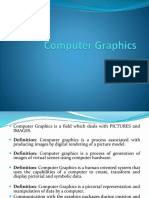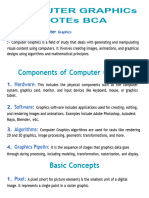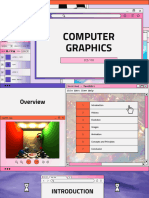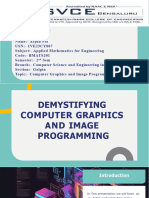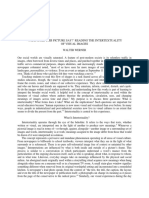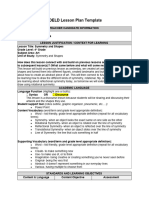0% found this document useful (0 votes)
26 views5 pagesTables of Computer Graphics
The document compares various concepts in computer graphics and image processing, including their purposes, inputs, outputs, and techniques. It also distinguishes between pixel and aspect ratios, raster and vector images, and different projection methods. Additionally, it discusses algorithms, window vs viewport, polygon types, and curve types, highlighting their definitions, use cases, and complexities.
Uploaded by
Nitin BishtCopyright
© © All Rights Reserved
We take content rights seriously. If you suspect this is your content, claim it here.
Available Formats
Download as DOCX, PDF, TXT or read online on Scribd
0% found this document useful (0 votes)
26 views5 pagesTables of Computer Graphics
The document compares various concepts in computer graphics and image processing, including their purposes, inputs, outputs, and techniques. It also distinguishes between pixel and aspect ratios, raster and vector images, and different projection methods. Additionally, it discusses algorithms, window vs viewport, polygon types, and curve types, highlighting their definitions, use cases, and complexities.
Uploaded by
Nitin BishtCopyright
© © All Rights Reserved
We take content rights seriously. If you suspect this is your content, claim it here.
Available Formats
Download as DOCX, PDF, TXT or read online on Scribd
/ 5



















